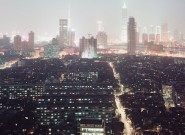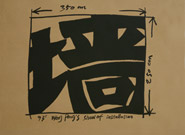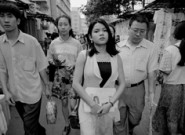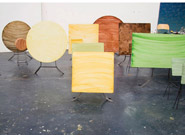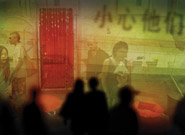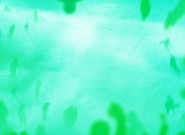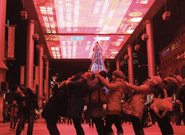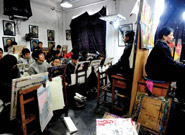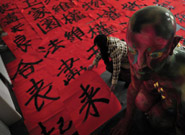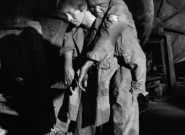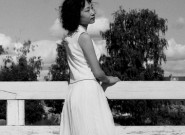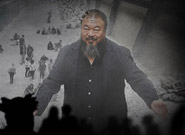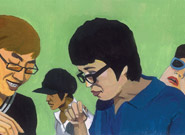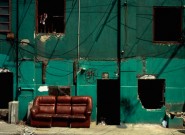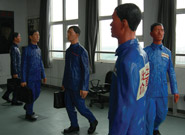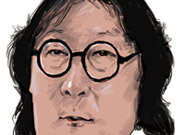In the final hours of 2010, en route from Philadelphia to Shanghai, I received a company e-mail from our chairman promulgating a change of slogan for Modern Media’s flagship publication, Modern Weekly. Ten years on, no longer would it offer the promise of “Read Modern Weekly, Keep Up With the World.” Instead, by changing one…
Read MoreOn November 20, 1993, Wang Peng held a solo exhibition at the short-lived Contemporary Art Gallery at 123 Longfusi Street in Beijing. The name of the show was “93: Wang Peng’s Installation Exhibition,” but there was only one work, entitled “Wall.” At the time, Wang was still a professor at the Central Academy of Fine…
Read MoreAs with most large-scale periodic exhibitions, in Lianzhou we find two festivals—the official show that unfolds in more formally curated gallery spaces, and a parallel program happening beyond that, including a range of events taking place in the small town itself. The latter “festival” can easily escape the public eye—a dead zone full of heretofore…
Read More“I ask it be extinguished / This crude iron light / The light of lovers / The light of the sun.” Such goes the first line of the poet Hai Zi’s work I Ask: Rain. According to Liang Yuanwei, this “crude iron light” leaves a biting sensation in her mouth. Sometimes words and fleeting images…
Read MoreThis past year has seen the consolidation of a number of strategies for adapting to the at times paradoxical but always parallel challenges of survival and production, many of which would be unrecognizable or even barred from the institutionalized cosmopolitan alternative systems by which they are often inspired. Take MadeIn Space, a reincarnation of Shanghai’s…
Read MoreA YEAR OF INTERVENTIONS As New Yorker correspondent Evan Osnos recently wrote, struggles over demolition have become “the national psychodrama, the defining battle over power and fairness.” Today, questions of land come to the fore in urban development plans, government revenues, and in the inclusion of real estate in GDP figures. Sun Dongdong weighs…
Read MoreIn 2010, the influence of microblogging on the Chinese art world was, in fact, quite micro, but it has at least become part of the conversation. If used properly, Weibo (literally “microblog,” a Twitter-style service from Chinese web portal Sina) is a tool with the capacity to transform artistic production. For galleries, microblogging has become…
Read MoreIn recent years, criticism of Chinese universities from scholars in a variety of fields has grown. The main focus of this criticism is the distribution of power in university administrations. Although Chinese art schools are distinct from other universities in many ways, this tide of criticism has exposed a variety of unsavory practices at art…
Read MoreIn late 2009 and early 2010, the hot topic in Beijing art circles was the relocation of the arts districts and the attendant legal complexities. With the rise of real estate speculation and a new round of construction planning for the city’s Chaoyang district in the first half of 2009, most of the town and…
Read MoreChen Chieh-Jen’s works Empire’s Borders I (2008-09) and Empire’s Borders II (2010) use images to address the modern critical construct that is “empire.” Modern leftist thinkers’ sustained consideration of “empire” seeks to excavate its internal contradictions. And just as Slovenian intellectual Slavoj Žižek posits, the true problems of empire lie with the world police: the…
Read MoreHow to begin? It feels like it was just earlier this evening that the artist Chen Xiaoyun called out of the blue. The preamble you’ve always dreaded, for a moment you’re at a loss. A rush of adrenalin…
Read MoreMassimo Torrigiani is not just another fair director. Before taking the position late last year, he launched the photographic quarterly Fantom, the latest in a long string of cultural entrepreneurial ventures. We caught up with him for Japanese barbeque in Beijing to talk about his plans for the fair and his read on an art…
Read MoreI ran into him the other day at the Element Fresh near the Lido Holiday Inn hotel in northeastern Beijing, not the sort of place you’d necessarily expect to find the first true superstar of Chinese art. But if that’s where Uli Sigg, the man at least indirectly responsible for a good part of that…
Read MoreEVENT HORIZON 迈阿密·MIAMI THE DAYS OF China exuberance in the U.S. are over, as everyone knows, and as the recent edition of Art Basel Miami Beach testifies. Where in 2007 you had a glitzy Sotheby’s sel…
Read MoreAmerican eyes have long been prepared by popular culture to see the urban geography of Shanghai, which could be said to carry within it the residual image of Blade Runner— that 1982 neo-noir where the future is not presented in sleek, slender forms but rather arises through a process of accretion. Each passing era’s technology…
Read MoreOn November 13, 2010, Zhu Fadong’s solo exhibition “All for Sale” opened at 798’s White Box Museum of Art. It was no different from any other opening on any other Saturday in 798. All the mandatory guests, journalists, and VIPs were present, and a ballet performance afterward added to an otherwise lively spectacle. The work…
Read MoreAsia Art Archive and the Museum of Modern Art jointly launched two projects based around first-hand accounts: the plan for the AAA’s “Materials of the Future: Documenting Contemporary Chinese Art from 1980-1990,” and MoMA’s book Contemporary Chinese Art: Primary Documents. Through the careful collection and translation of primary materials, the two bodies of texts explore…
Read More
